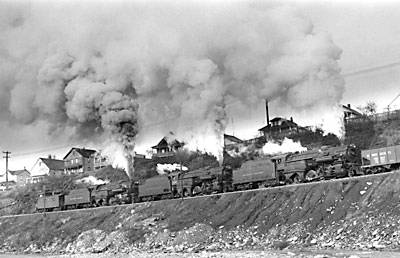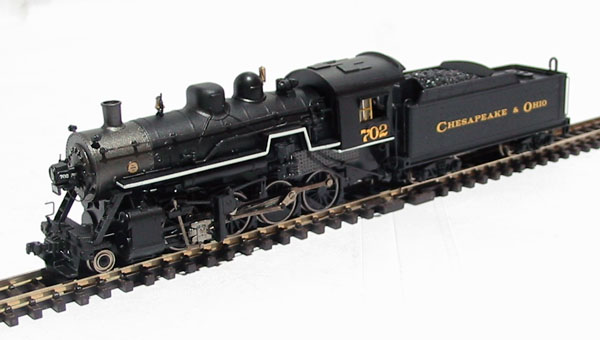


2-8-0 Consolidation
IC 702, 2-8-0 Consolidation, was built by Rogers and Schenectady around 1902-03.
Of all the locomotive types that were created and experimented with in the early part of the 19th century, the 2-8-0 was a relative latecomer. The 2-6-0, often considered the logical forerunner to the 2-8-0, was first created in the early 1860s.
The first locomotive of this wheel arrangement was likely built by the Pennsylvania Railroad (PRR), but like the first 2-6-0s, this first 2-8-0 had a leading axle that was rigidly attached to the locomotive's frame. To create this 2-8-0, the PRR's master mechanic John P. Laird modified an existing 0-8-0, the Bedford between 1864 and 1865.
The locomotive Consolidation, built in 1865 is widely considered the first true 2-8-0 built in the United States. It is this locomotive that is the origin of the class name.
Only a few railroads purchased this locomotive type upon its introduction by Baldwin. Even the Baltimore & Ohio, which had nearly 180 of this locomotive type in regular service by 1885, didn't purchase any of this type until 1873.
The 2-8-0 design was given a major boost in 1875 when the PRR made it the railroad's standard freight locomotive. 1875 was also the year that the Erie Railroad began replacing its 4-4-0s in freight service with 2-8-0s. The railroads found that the 2-8-0 could move trains twice as heavy for half the cost of their earlier brethren. From a financial standpoint, the choice of freight locomotives was clear.